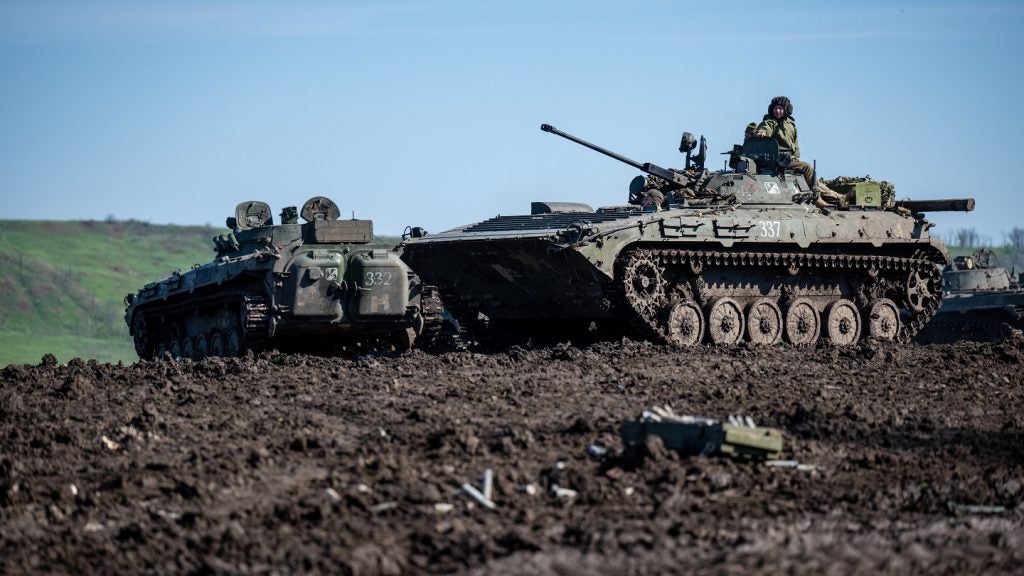Ukrainian forces are likely moving towards assembly areas in preparation for their anticipated counter-offensive against Russian forces in occupied Ukraine, with up to nine new armoured or mechanised brigades forming a key element to the upcoming push.
Western support to Ukraine in 2023 has centred on the provision of platforms, ammunition, and training required to undertake combined arms maneouvres, appearing to be in preparation for a 2023 offensive by Kyiv. Fighting so far this year has seen a consolidation of frontlines across the 1,300km front, with key locations such as the town of Bakhmut the site of fierce and bloody combat.
Such has been the intensity of the fighting around Bakhmut, that it is assessed that Russian forces have sustained around 60,000 casualties in the area. Ukrainian forces, for months stating that they were using the location as a way to inflict severe casualties on Russia, have withdrawn from the town’s urban areas to locations to the west.
Some 500 civilians are thoughts to still remain in Bakhmut, which has been effectively destroyed through months of heavy and sustained urban combat and artillery strikes.
Is Wagner a taskable force for Moscow?
Russia’s Wagner private military security contractor has been heavily involved in the fighting in and around Bakhmut and is thought to have suffered some 20,000 casualties from its own forces. Most of these are likely to have been poorly trained penal recruits, brought into the company several months back to provide a quantitative edge to its qualitative operational ability.
However, such has been the attrition suffered that the head of Wagner Group, Yevgeny Prigozhin, recently stated that his force would take one month rest after withdrawing from the frontlines of Bakhmut. It is understood that there is clear animosity between Prigozhin and elements of Russia’s defence command structure, with the mercenary chief being publicly vocal in his criticism of Russian Minister of Defence Sergei Shoigu and Valery Gerasimov, Chief of the General Staff.
Given this criticism, it is unclear as to whether Wagner forces are considered to be a taskable unit for Russian defence planners, operating as it does outside of its structures. In imposing a one-month period of rest and recuperation for Wagner’s operations in Ukraine, it is unknown whether it would be able to either react or be tasked with moving forward in the event of a Ukrainian counter-offensive.
Chechen leader Ramzan Kadyrov’s and his Chechen forces have reportedly been assigned to partly fill the gap resulting from Wagner’s withdrawal from the Bakhmut region, along with elements of Russia’s reconstituted VDV specialist airborne troops, once again re-roled into line infantry and away from their more specialist infiltration and strike roles.
One significant outcome of Wagner’s operations in Ukraine, which saw its numbers swell to meet the human capital demanded on it by Moscow’s defence planners, is that it will return to a much smaller and more specialised recruitment base. The Group’s operations in Ukraine run counter to how it works elsewhere in the world, using smaller numbers of highly trained tactical units.
The use of private military security contractors (PMSC) in modern conflicts is not a new trend, with a sizeable proportion of the former US presence in Iraq coming from PMSC’s. One of the largest was Blackwater, which reportedly had tens of thousands of personnel based in Iraq at the height of the US occupation of the country in mid-2000s.
Russia seeks to formalise Iranian support
With 21 consecutive days of long-range missile and loitering munition attacks by Russia into Ukraine, Moscow has been able to sustain persistent strikes on Ukrainian military and civilian targets in recent weeks, more so than had been previously possible amid a shortage of munitions.
It is understood that while Russia’s own stocks of long-range missiles remain low, its recent ability to undertake daily missile and loitering munition attacks against Ukraine has been a result of an additional supply of Iranian-made systems being supplied to Moscow.
As a result of this, Moscow is attempting to create a more sustainable structure for the Iranian supply chain, as it struggles to replenish its own indigenous stocks of munitions and military equipment.








